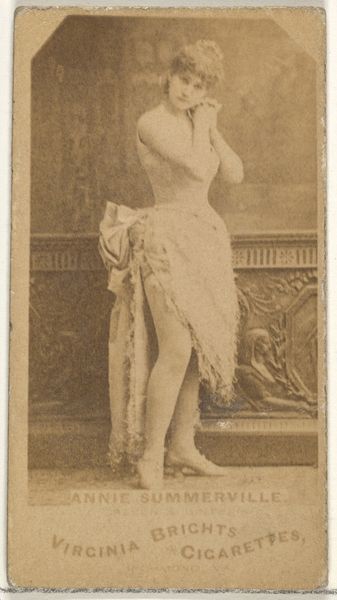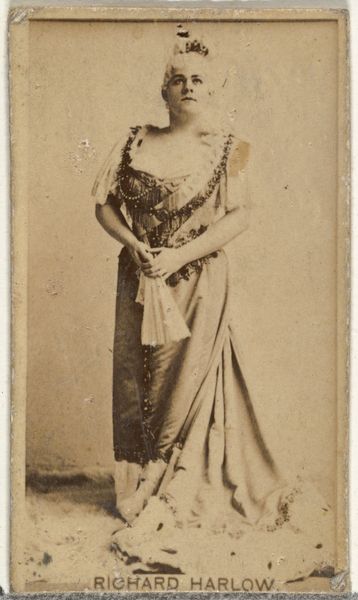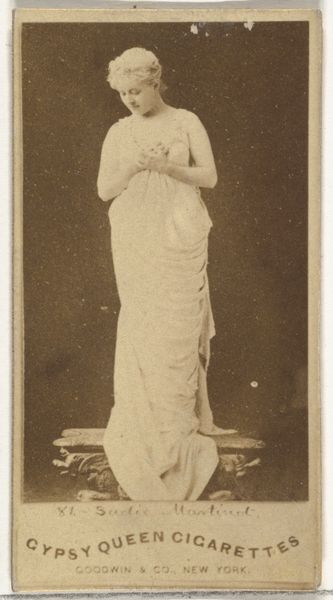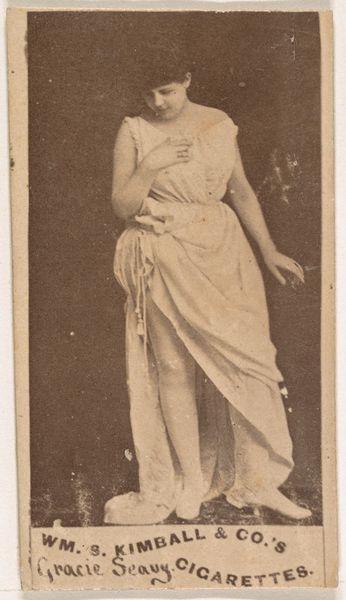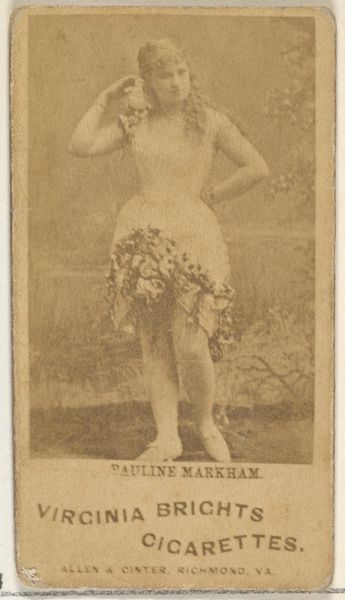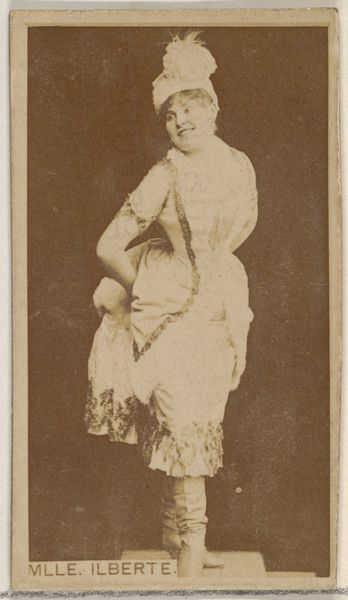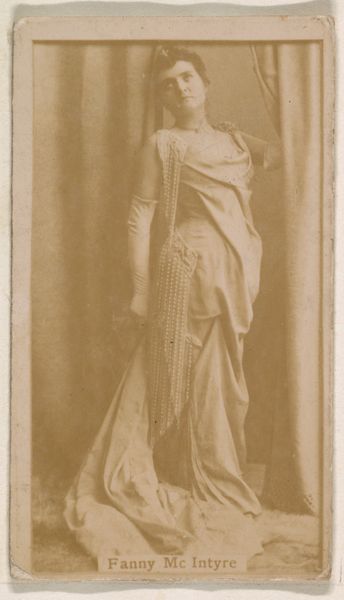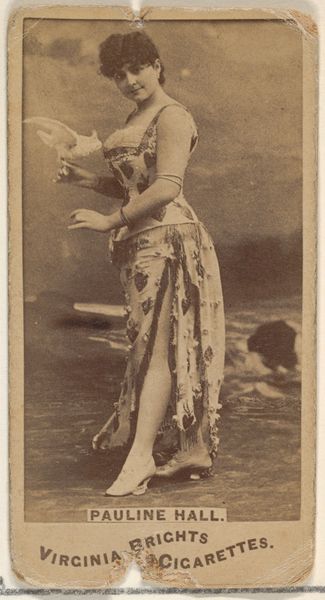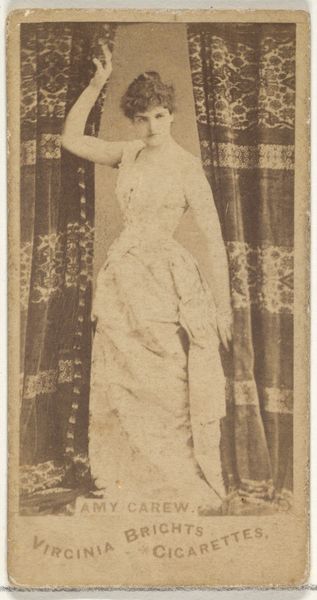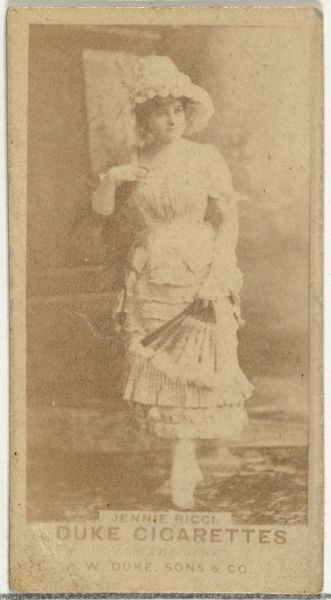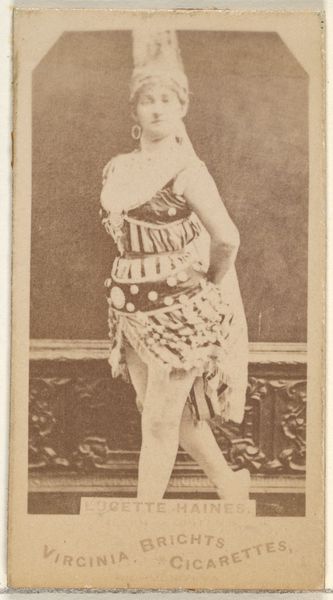
Laura Curtis, from the Actors and Actresses series (N45, Type 1) for Virginia Brights Cigarettes 1885 - 1891
0:00
0:00
albumen-print, print, photography, albumen-print
#
albumen-print
#
portrait
# print
#
photography
#
historical photography
#
19th century
#
albumen-print
Dimensions: Sheet: 2 3/4 x 1 3/8 in. (7 x 3.5 cm)
Copyright: Public Domain
Editor: This is "Laura Curtis, from the Actors and Actresses series" by Allen & Ginter, probably made between 1885 and 1891. It’s an albumen print, so essentially a photograph, that was used to advertise Virginia Brights Cigarettes. What strikes me most is how this small card manages to evoke a whole world of late 19th-century glamour and marketing. What do you make of it? Curator: The fan, the floral crown, the suggestive hint of Japanese prints – all of these elements speak volumes. The Victorians, particularly through things like trade cards, loved to encode messages with objects and images. What could the fan signify to viewers at the time? Think about ideas of the exotic, the performative self, feminine presentation, secrets. Editor: It seems so carefully staged. It makes you wonder about the layers of artifice involved – not just in the photography itself, but in constructing an identity for the actress, and by extension, the cigarette brand. Curator: Exactly! And consider this in light of Japonisme, the craze for all things Japanese. The fan isn't just a fan; it’s a signal, placing Laura Curtis within a cultural framework. Allen & Ginter understood that these symbols would resonate, adding allure to their product by association. What memories do these visual symbols stir, even today? What assumptions do we bring to an image like this? Editor: That's a great point. The fan today still has this association with mystery and the East, I guess, even if we don't necessarily make the connection consciously. Curator: Visual symbols are never truly neutral. Their power comes from the echoes of cultural history they carry. We are all translators when we see them. Editor: This makes me want to explore this period's advertising in depth – to really decode these visual cues and what they meant. Curator: Precisely! These aren't just pretty pictures. They're time capsules of cultural values.
Comments
No comments
Be the first to comment and join the conversation on the ultimate creative platform.


